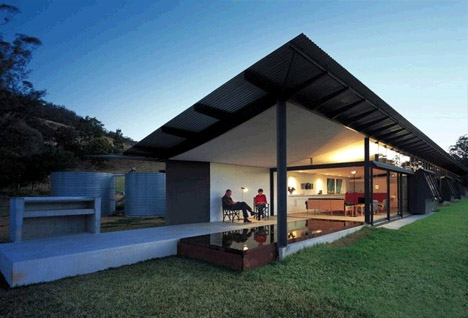This video, described as a “…time machine [that] has production values on par with Inception, and like that thriller it might leave you wondering which dream level we’re on," by The Architect’s Newspaper, was shown at a press conference meant to attract tenants to the new building and held by Mayor Bloomberg, architects Daniel Liebeskind and Michael Arad and developer Larry Silverstein.
Archives for September 2011
Australian Architect Crafts Regional Homes
Sensational architecture makes headlines as if its architects were one-man shows, when they are more frequently the the front man for a much larger operation. Though he has won awards including the Pritzker Prize and AIA Gold Metal, Glenn Murcutt spends his time designing area-appropriate buildings to suit local needs rather than seeking out the spotlight.
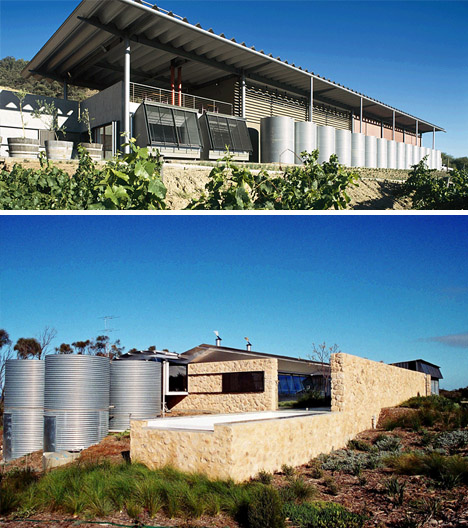
He has no signature style as some architects do, but there are common themes to his work: simplicity, efficiency, and a respect for the beauty and primacy of the natural environments in which his works are to be built.
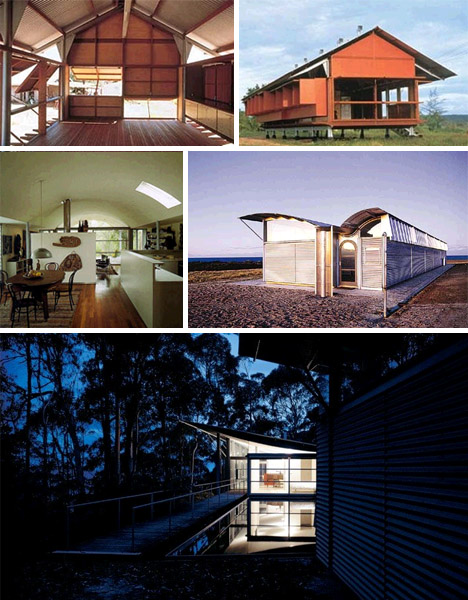
His pragmatic approach leads to the frequent use of simple and durable materials like corrugated metal, used in rainwater catchment barrels, on roofs and as siding (in addition to glass, wood, stone and brick as appropriate). Single-story, open-air dwellings, often on stilts, also reflect his region of practice: mainly Australia, with hot weather but also prone to floods in places.
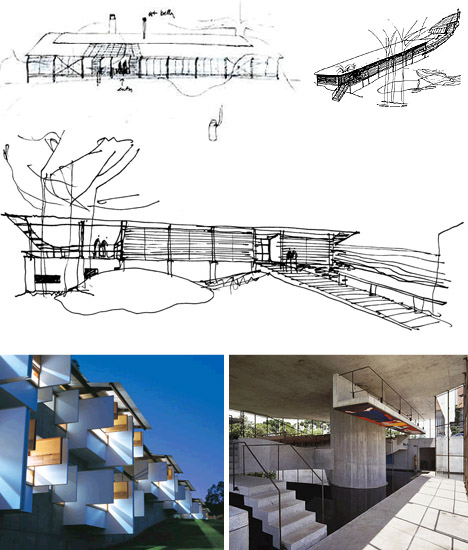
Born in London and raised in New Guinea, taught of Henry David Thoreau as well as Mies van der Rohe, his architecture reflects modern sensibilities and an appreciate for simple living with the pragmatic differences between geographical regions.
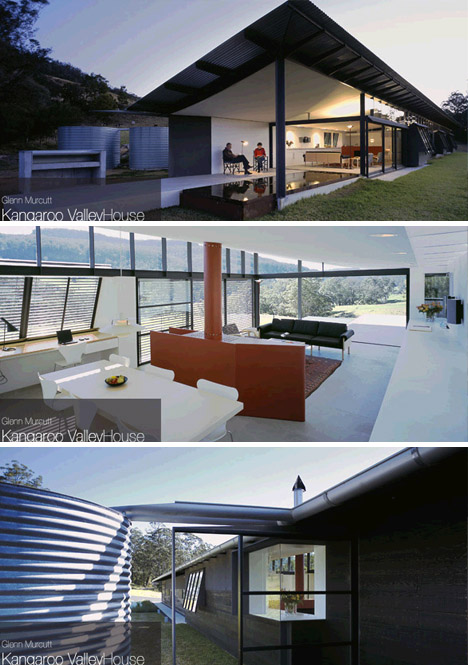
If his life story and work has a message, perhaps it is this: don’t lose track of what you want to do or what you are good at doing … his work has become famous, certainly, but he remains a single-architect firm and sticks to regions he understands and can best design for (all the while with a never-ending list of clients wanting him to work for them).
Tchaikovsky Time-lapse
[pb_vidembed title=”” caption=”” url=”http://vimeo.com/27953845″ type=”vem” w=”480″ h=”270″]
Read This Before You Remodel a Kitchen
A kitchen remodel is a big deal—not something to be approached rashly. So before you even visit a showroom or meet with a pro, Read our expert advice on creating the cook space you’ve always coveted.
Make Cents Out of Your Remodel
Worth the Splurge
1) Second sink Place it outside of the main cooking and cleanup zone so that a second chef can prep food, wash hands for dinner, or bartend during parties.
2) Paneled cabinet ends These decorative panels, which are essentially oversize doors fixed to any exposed sides of cabinets, give your kitchen a custom-built, furniture-like look.
3) Full-extension, soft-close drawer glides Installed under or on the sides of a drawer, they allow it to pull completely out of the cabinet so that you can reach everything inside. Plus, they eliminate slamming.
Not Worth the Splurge
1) Glazed, distressed, and crackled finishes These can increase cabinet costs by as much as 30 percent and can start to look dated as trends change.
2) Pot filler It does make filling the pasta pot easier, but it doesn’t help with the far worse task of carting boiling water to the sink when your fettuccine is done.
3) Wine fridge Do you really need 18 bottles of Pinot within arms reach and kept at precisely 55 degrees?
Read the rest here at thisoldhouse.com
9/11: Ten years later [infographic]
Multifamily production skyrockets in 2011, up 178% from 2008

Up, up, and away
Without question, the multifamily sector has kept much of the real estate industry afloat in recent years as homeowners lose homes, rent apartments and make construction possible despite continued difficulty with construction loans. According to the National Association of Home Builders’ (NAHB) Multifamily Production Index (MPI), the second quarter of 2011 continued to show improvement for the fourth quarter in a row.
The MPI jumped from 41.7 in the first quarter of the year to 44.4 in the second quarter, representing a marked 178 percent improvement from the MPI record low of 16.0 points in the third quarter 2008.
Cautious optimism
According to the NAHB, “The index provides a composite measure of three key elements of the multifamily housing market: construction of low-rent units, construction of market-rate-rent units, and construction of “for sale” units. The index and all of its components are scaled so that any number over 50 indicates that more respondents report conditions are improving than report conditions are getting worse. In the second quarter of 2011, a majority of developers saw improvements in the production of low-rent and market-rate units.”
“Multifamily rental construction is trending upward, and it is definitely the brightest sector in the broader housing market,” said NAHB Chief Economist David Crowe. “However, the entire housing market continues to be very fragile and subject to many external pressures, including an ongoing shortage of financing for new projects.”
Developers expectations are cautiously optimistic regarding the remainder of 2011, noting market uncertainty (with builders and consumers) as a “dampening effect.”
“Even though multifamily is trending upward, production is still very low in a historic context and in the context of what we project is necessary to meet long-term demand,” Crowe said. With the number of multifamily starts and new “accidental landlords,” we do not share the certainty that demand for multifamily units will continue to rise indefinitely, but rather as a short term effect of the recession.
Why does a flooded house need to be torn down?
 Although water is essential for life, it can be destructive — particularly when it comes in the form of a flood. Scientific and historical evidence suggest that a flood was one of the most massively cataclysmic events in human history. Today, we still struggle with periodic floods that continue to wreak havoc on communities. And when a flood strikes your home, the decision of what to salvage and what to let go of is particularly heart-wrenching.
Although water is essential for life, it can be destructive — particularly when it comes in the form of a flood. Scientific and historical evidence suggest that a flood was one of the most massively cataclysmic events in human history. Today, we still struggle with periodic floods that continue to wreak havoc on communities. And when a flood strikes your home, the decision of what to salvage and what to let go of is particularly heart-wrenching.
To understand the damage a flood can cause, let’s take a look at some of the common problems and hazards associated with a flooded home. Like the famous phrase, "water, water everywhere but not a drop to drink," floodwater is particularly dangerous. Because it picks up unsafe chemicals, mud and refuse, floodwater is very unclean. Not only is it unsafe to drink, but it also contaminates everything it touches — and in a flood situation, that means almost everything in your home.
Even tap water isn’t safe immediately after a flood: You’ll need to strain, boil and add bleach to tap water to decontaminate it. But to make a flooded home safe enough to live in at all, you’ll have to hose down all walls and hard floors using soap and water. Other things in a flooded house are even more difficult to clean. For instance, mattresses and wallboard can soak in contaminants that are almost impossible to get rid of. This is why experts advise disposing of things you suspect are contaminated.
To protect against future flooding in a flood-prone area, you’ll also need to floodproof your home during renovations. This might mean adding waterproof seals, installing backflow valves in drains and getting shields for doors and windows [source: FEMA].
On top of all these precautions, structural damage in your home could call for significant repairs. Considering all these factors, you can understand how it might be cheaper — and certainly safer — to tear down a flooded home. Local regulations may even require it.
Read more here. at howstuffworks.com
The Most Powerful Home Sound System in the World (34 Photos)
Bathroom Innovation – jaw-dropping design
Emerging trend: multi-tasking designs
From the geniuses in the design world, several winners have been named in the Reece Bathroom Innovation Awards for 2011 and right off the bat, we noticed a trend more dominant than in years past- bathrooms designs that multi-task to accommodate smaller spaces.
The winners are broken into professional designers and student designers with awards for both and our favorite design (which unfortunately did not win the award after being named a finalist) was Robert Grynkofki’s Vanity tub that brilliantly hides a tub underneath a double sink vanity:




Grynkofki’s entry says, “A bathtub is a key piece in the bathroom but individuals with smaller bathrooms often find the bathtub is a luxury that has to be missed. Those lucky enough to have a bath know that it often collects dust if it is unused. The Vanity Tub offers a solution as it offers the user a comfortable tub which then disappears underneath a spacious double sink vanity. Two sliders limit the operating area for safety and wheels for movement means this bath is as effortless as opening a kitchen drawer. Flexible steel knitted hoses for drainage and water enable the Vanity Tub to operate like any other bathtub. The aesthetics of the Vanity Tub can be personalized and the frame is designed to support standard sized bathtubs.”
Knowing options for smaller spaces can help real estate professionals give buyers a better vision for their future home and being aware of trends is useful for luxury real estate professionals expected to know the latest and greatest home amenities.
